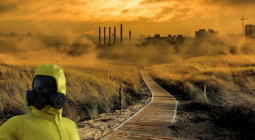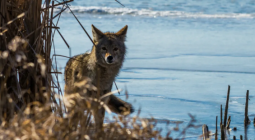75 ways Trump made America dirtier and the planet warmer.

In the past four years, Trump has shredded environmental protections for American lands, animals and people.
"I want crystal clean water and air."
That's what Donald Trump said in the first chaotic presidential debate with Joe Biden. But there is scant evidence of that desire in the actions of his administration, which has spent nearly four years systematically dismantling core environmental protections, some of which stretch back decades.
Experts agree that the climate crisis's most destructive manifestations, on display in a particularly difficult year for the US, barely scratch the surface of the catastrophes to come. Yet the president appears unmoved by the enormous wildfires, devastating hurricanes, widespread water problems and persistent air pollution that disproportionately blights black and Latino communities. His administration has scrapped climate regulations, rolled back clean water rules and loosened pollution standards. Protections for public land and threatened species have been shrunk while new oil pipelines and coal mining have been encouraged.
The legacy of these changes will stretch well beyond Trump’s presidency. Here is a list of some of the key rollbacks of the Trump era.
This list was adapted from the Harvard Law School's Regulatory Rollback Tracker.
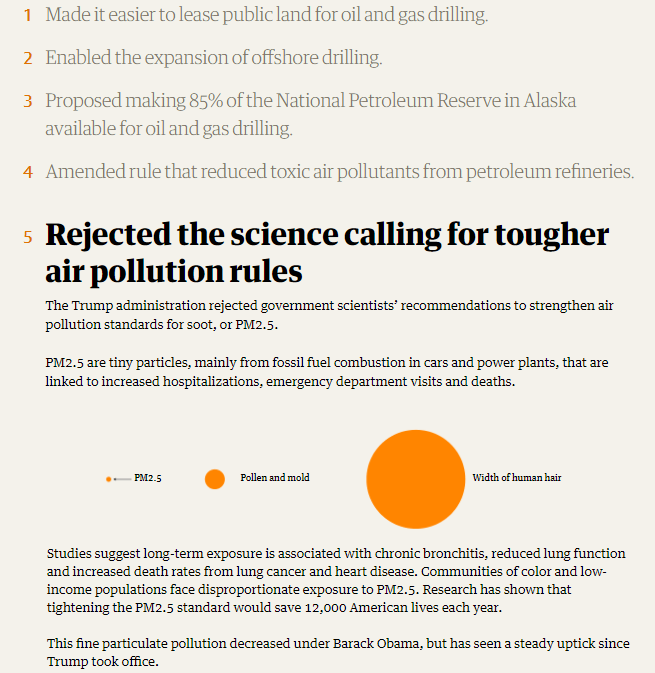
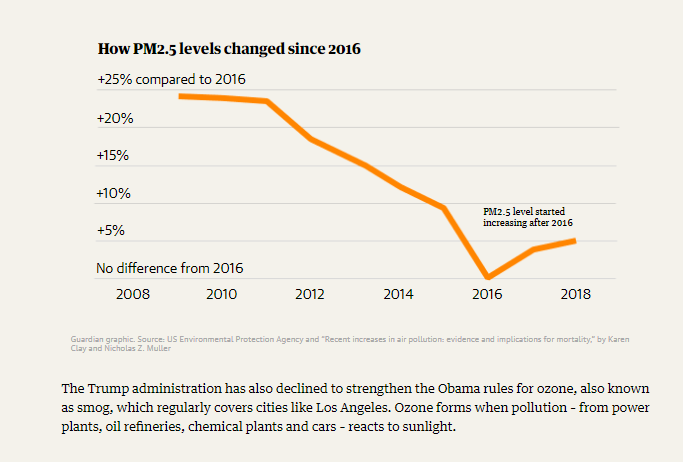
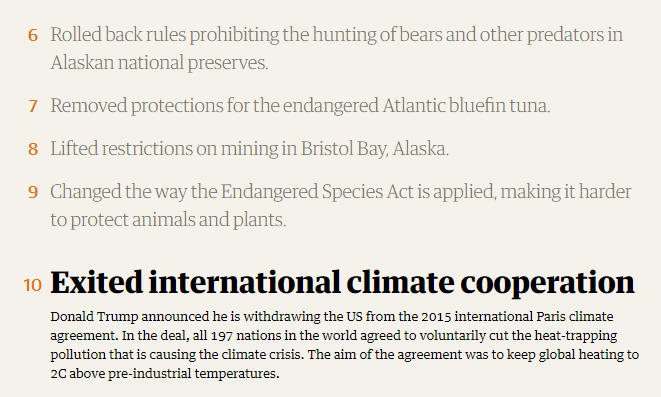
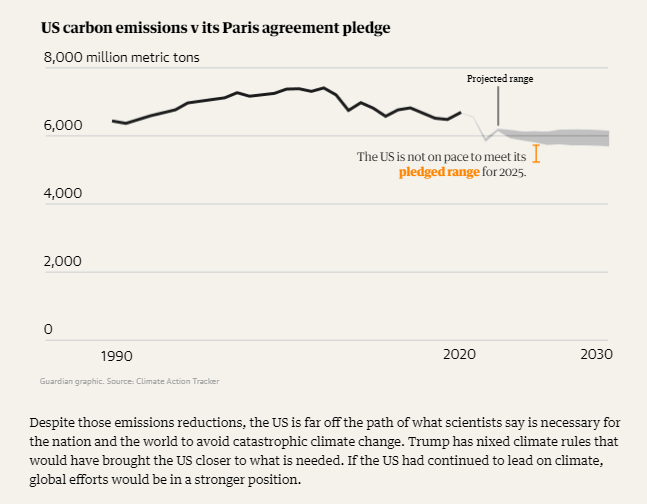
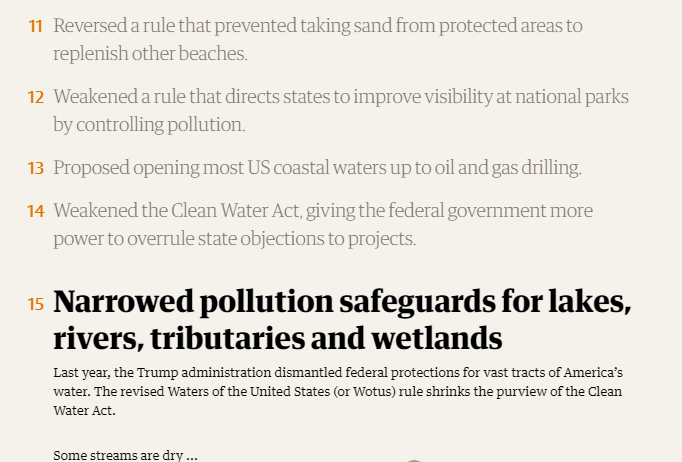
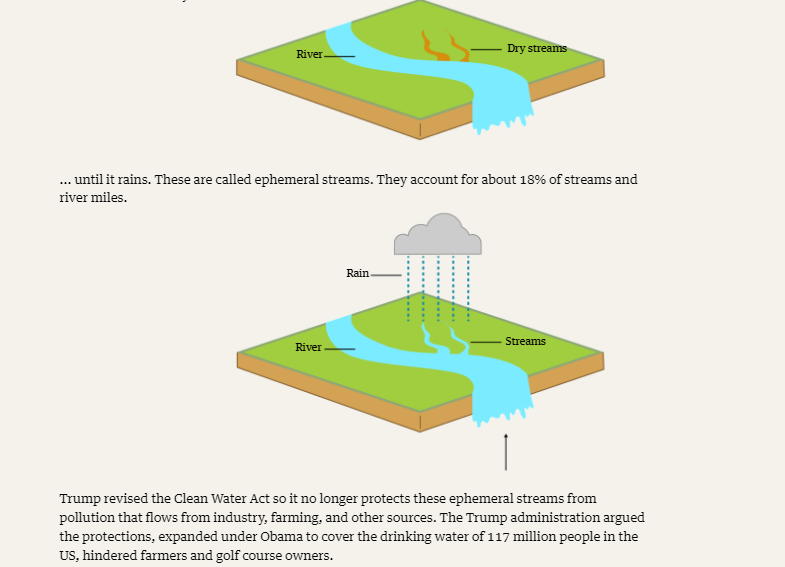
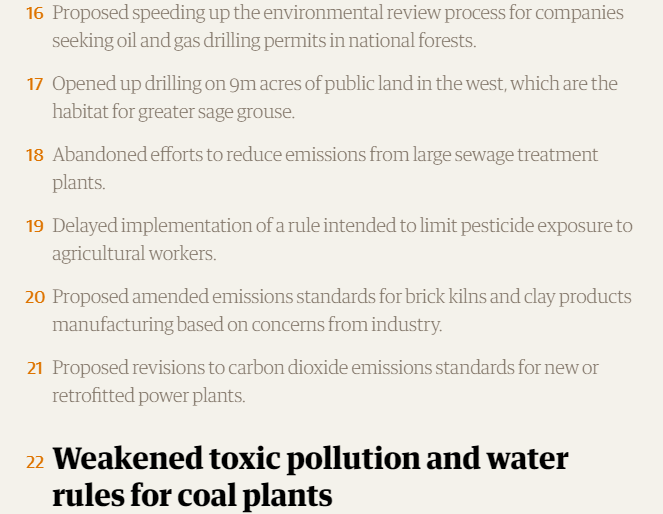
The Trump administration has sought to ease the steep decline of the US coal industry by weakening pollution rules for coal power plants, but its efforts haven’t helped much. Coal use is waning in the US as utilities turn to cheaper fossil gas and renewable power. The Environmental Protection Agency (EPA) is rescinding standards for coal plants to curb mercury pollution, even though most plants had already complied.
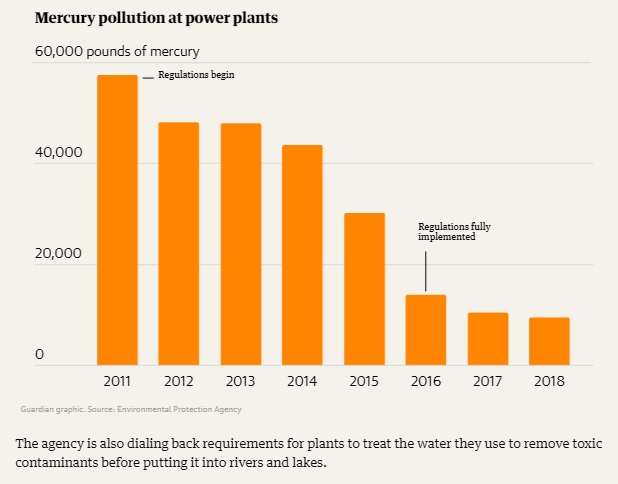
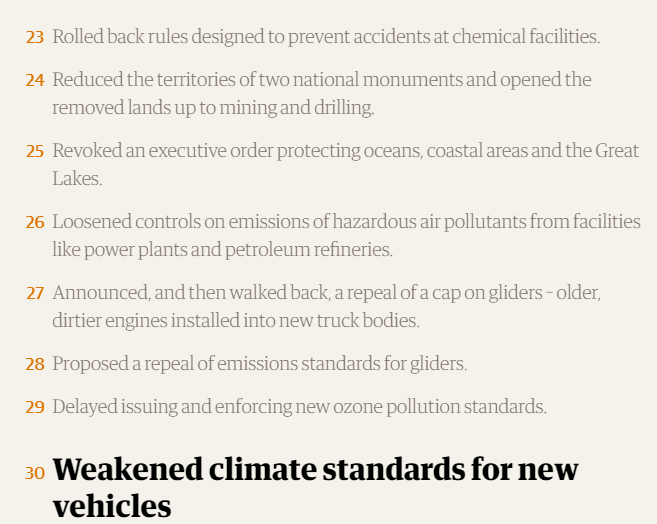
The fuel efficiency of cars and trucks has steadily improved since the federal government started setting national standards in the 1970s and the Obama administration looked to raise them further, requiring that vehicles manage around 54 miles a gallon of fuel by 2025. The move was perhaps the biggest national rule to combat the climate crisis, with transportation accounting for more than a third of the US’s planet-heating emissions.
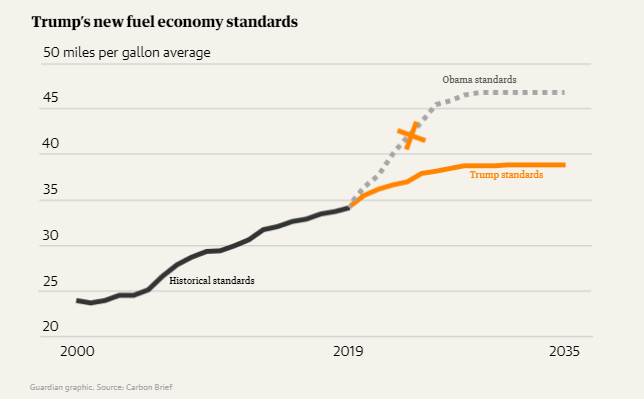
The Trump administration not only gutted the rule, winding it back to 40 miles a gallon; it attempted to prevent California from setting its own, tougher, standards. The administration’s own figures show this rollback will cause an extra billion tons of carbon dioxide emissions over the lifetime of the vehicles manufactured during the terms of the rule, as well as thousands of jobs lost in the auto industry and more expensive gasoline for drivers.
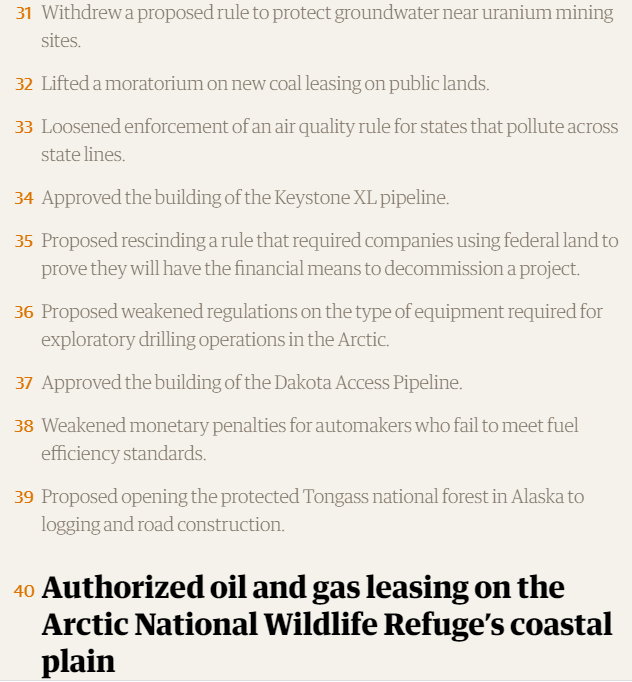
The last large untouched wilderness in the US is found in the north-east extremity of Alaska. The 19m acres of tundra, streams and mountains that make up the Arctic National Wildlife Refuge is home to creatures ranging from polar bears to hundreds of bird species, as well as a migratory caribou herd vital to the sustenance of the Gwich’in native people.
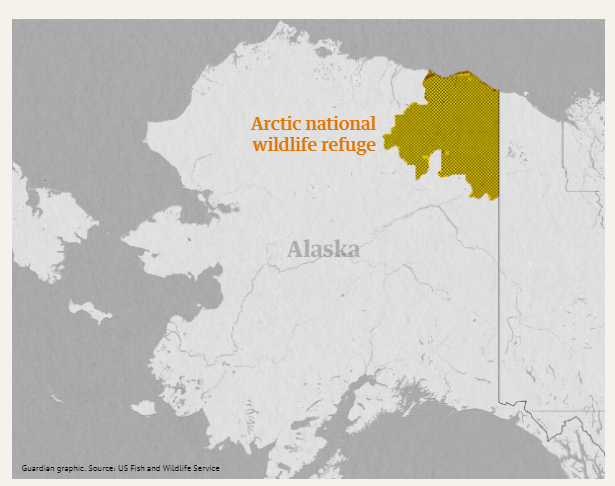
The Trump administration is repealing decades of protections to allow oil and gas drilling in the coastal region of the refuge. The Gwich’in, who say the drilling will destroy their way of life, have vowed to fight the move. The recoverable oil could, when burned, release as much as 5m tons of carbon dioxide.
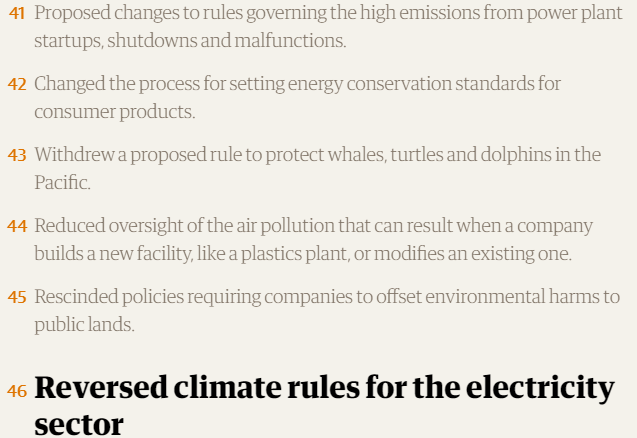
The Clean Power Plan was the Obama administration’s signature climate rule. The rule – finalized in 2015 – directed states to reduce their electricity sector emissions. It aimed to slash carbon pollution from power plants 32% by 2030, as compared to 2005 levels within the electricity sector.
Even though the supreme court halted the rule in 2016, and states were never required to comply, carbon dioxide emissions from the US power sector have still fallen more than the rule’s goal – by at least one-third. Cheaper natural gas and renewable power, as well as local policies to move away from fossil fuels, sped the shift.
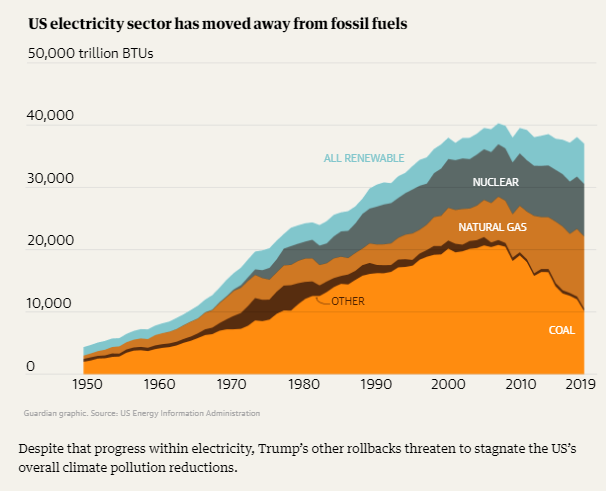
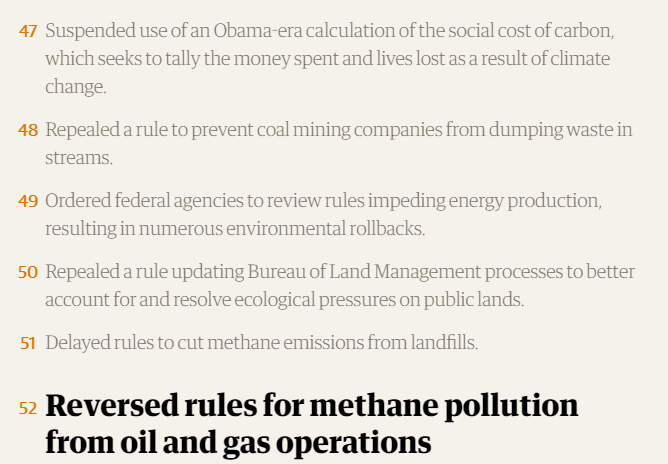
Trump’s EPA and interior department (DOI) have both weakened Obama-era rules that limit methane emissions from oil and gas operations.
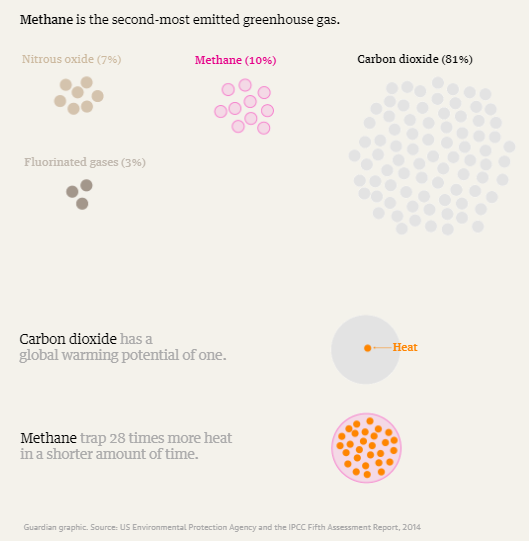
The EPA has rolled back methane rules for new operations around the country, and the interior department has weakened them for oil and gas companies operating on public lands. A federal court struck down the interior department rollback.
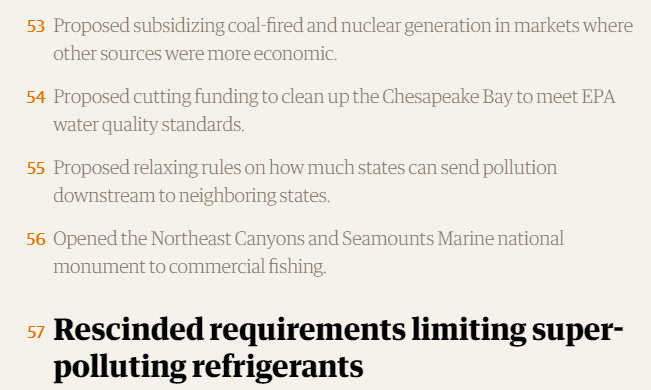
Hydrofluorocarbons, or HFCs, have been widely used in refrigeration, air conditioning and building insulation as a replacement for chlorofluorocarbons, or CFCs, which were found to be depleting the ozone layer.
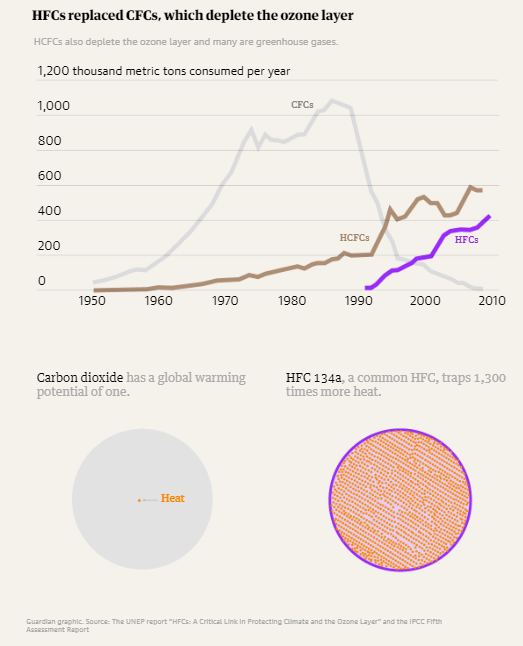
HFCs, however, are a potent greenhouse gas and the international community has agreed to phase out their use. The Trump administration has refused US backing for this move, ignoring pleas from Republican senators, and in February scrapped rules requiring HFC leaks to be repaired. This rollback will increase planet-heating emissions by the equivalent of 2.9 million tons each year, the EPA estimates.
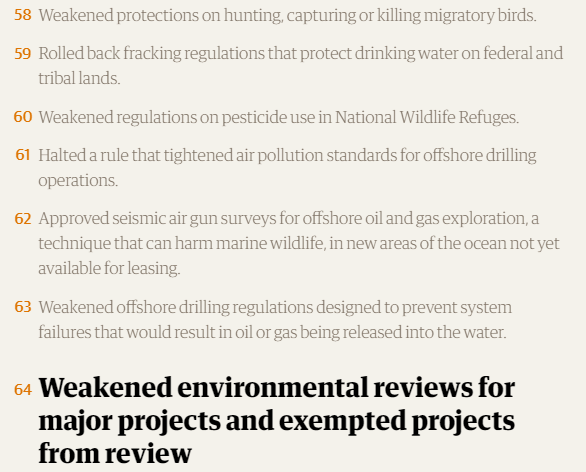
Regulations under the National Environmental Policy Act guide agencies on how to consider the environmental impacts of large-scale infrastructure projects, like cross-state pipelines.

The Trump administration has changed the rules to exclude more projects from review and reduce the number of effects and alternatives agencies must consider.

For the past 20 years, a pesticide known as chlorpyrifos has been banned for use in American homes due to scientific evidence linking it to a range of health problems, including brain developmental problems in children.

The EPA was poised to also ban its outdoor use, where it is sprayed onto crops such as almonds, soybeans and grapes, but the Trump administration blocked the move. Environmental groups and farmers have objected, only for the EPA to now say the science does not support a ban. In doing so, the EPA disregarded a number of epidemiological studies showing a link between prenatal chlorpyrifos exposure and cognitive disorders in toddlers.

21 October 2020
The Guardian

